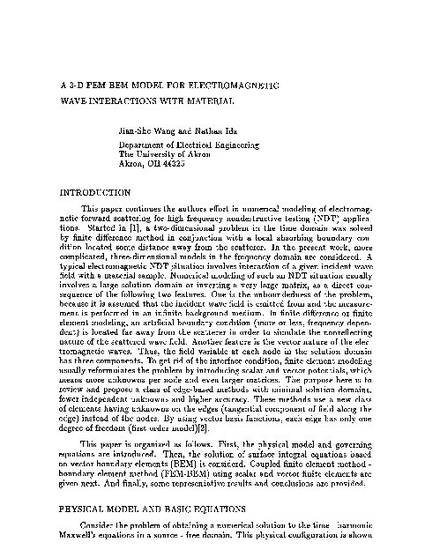
This paper continues the authors effort in numerical modeling of electromagnetic forward scattering for high frequency nondestructive testing (NDT) applications. Started in [1], a two-dimensional problem in the time domain was solved by finite difference method in conjunction with a local absorbing boundary condition located some distance away from the scatterer. In the present work, more complicated, three-dimensional models in the frequency domain are considered. A typical electromagnetic NDT situation involves interaction of a given incident wave field with a material sample. Numerical modeling of such an NDT situation usually involves a large solution domain or inverting a very large matrix, as a direct consequence of the following two features. One is the unboundedness of the problem, because it is assumed that the incident wave field is emitted from and the measurement is performed in an infinite background medium. In finite difference or finite element modeling, an artificial boundary condition (more or less, frequency dependent) is located far away from the scatterer in order to simulate the nonreflecting nature of the scattered wave field. Another feature is the vector nature of the electromagnetic wave. Thus, the field variable at each nodc in the solution domain has three components. To get rid of the interface condition, finite element modeling usually reformulates the problem by introducing scalar and vector potentials, which means more unknowns per node and even larger matrices. The purpose here is to review and propose a class of edge-based methods with minimal solution domains, fewer independent unknowns and higher accuracy. These methods use a new class of elements having unknowns on the edges (tangential component of field along the edge) instead of the nodes. By using vector basis functions, each edge has only one degree of freedom (first order model)[2
Available at: http://works.bepress.com/nathan_ida/3/
